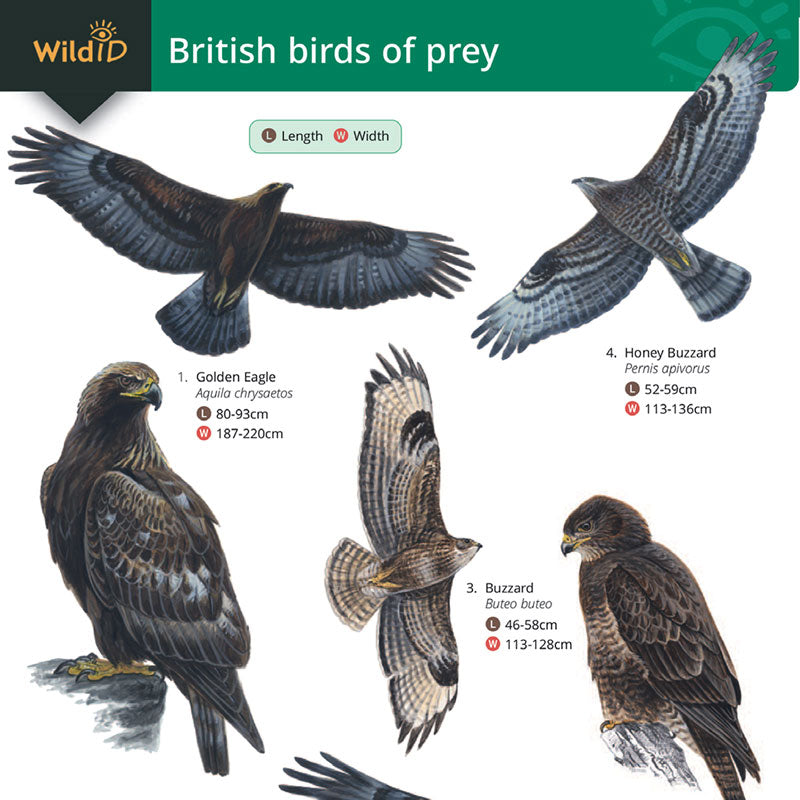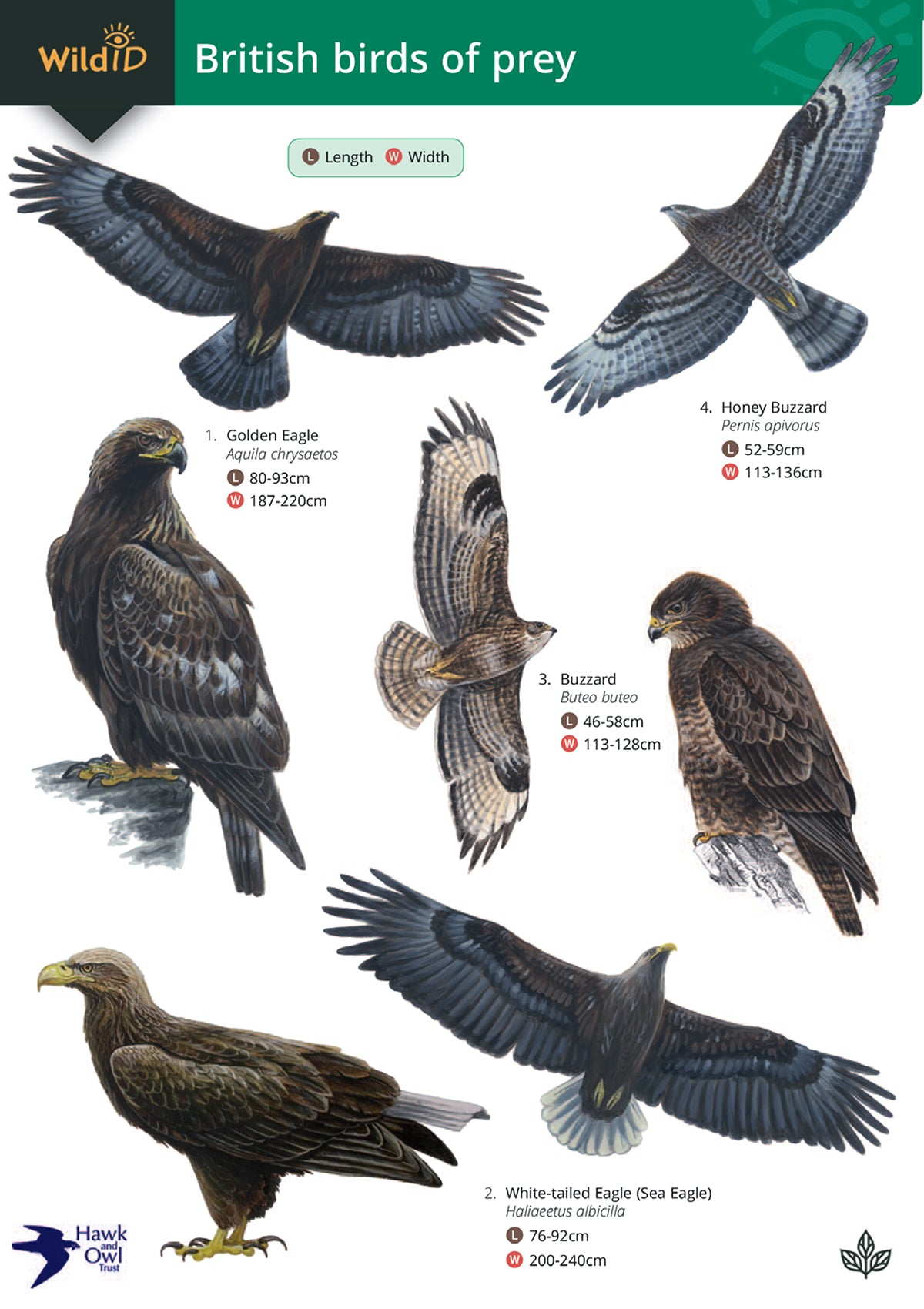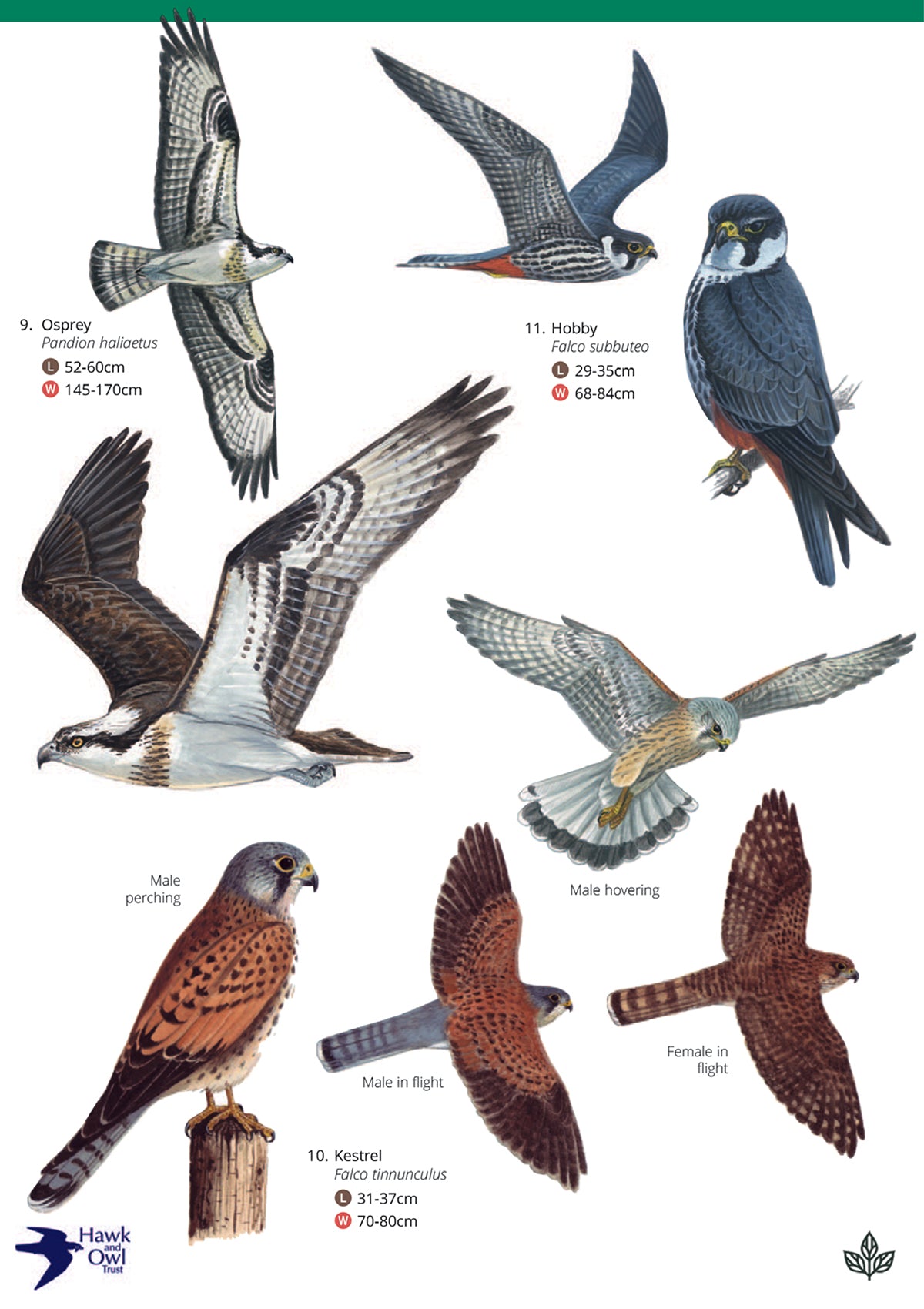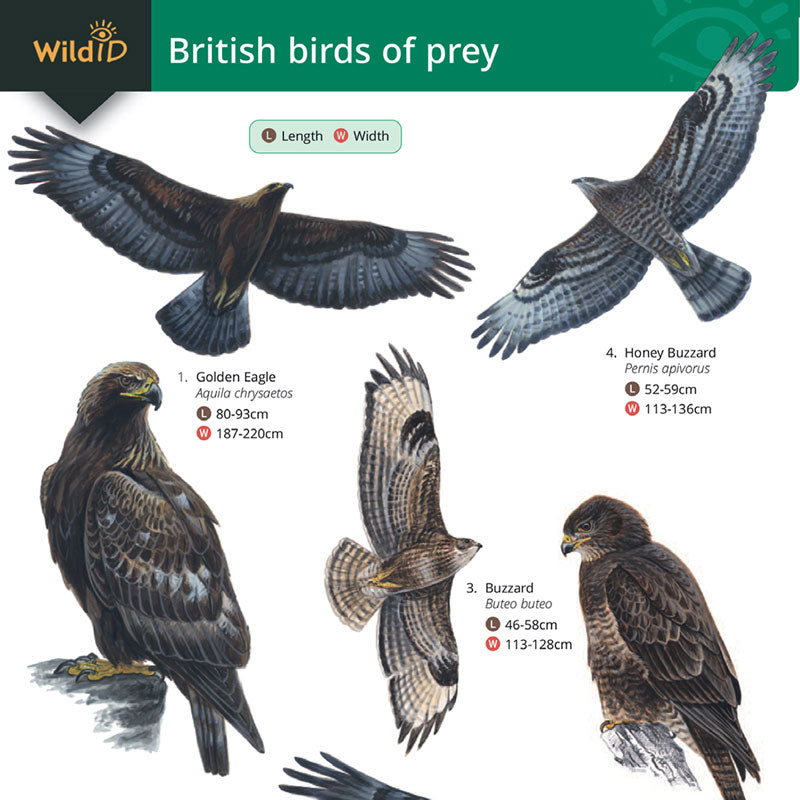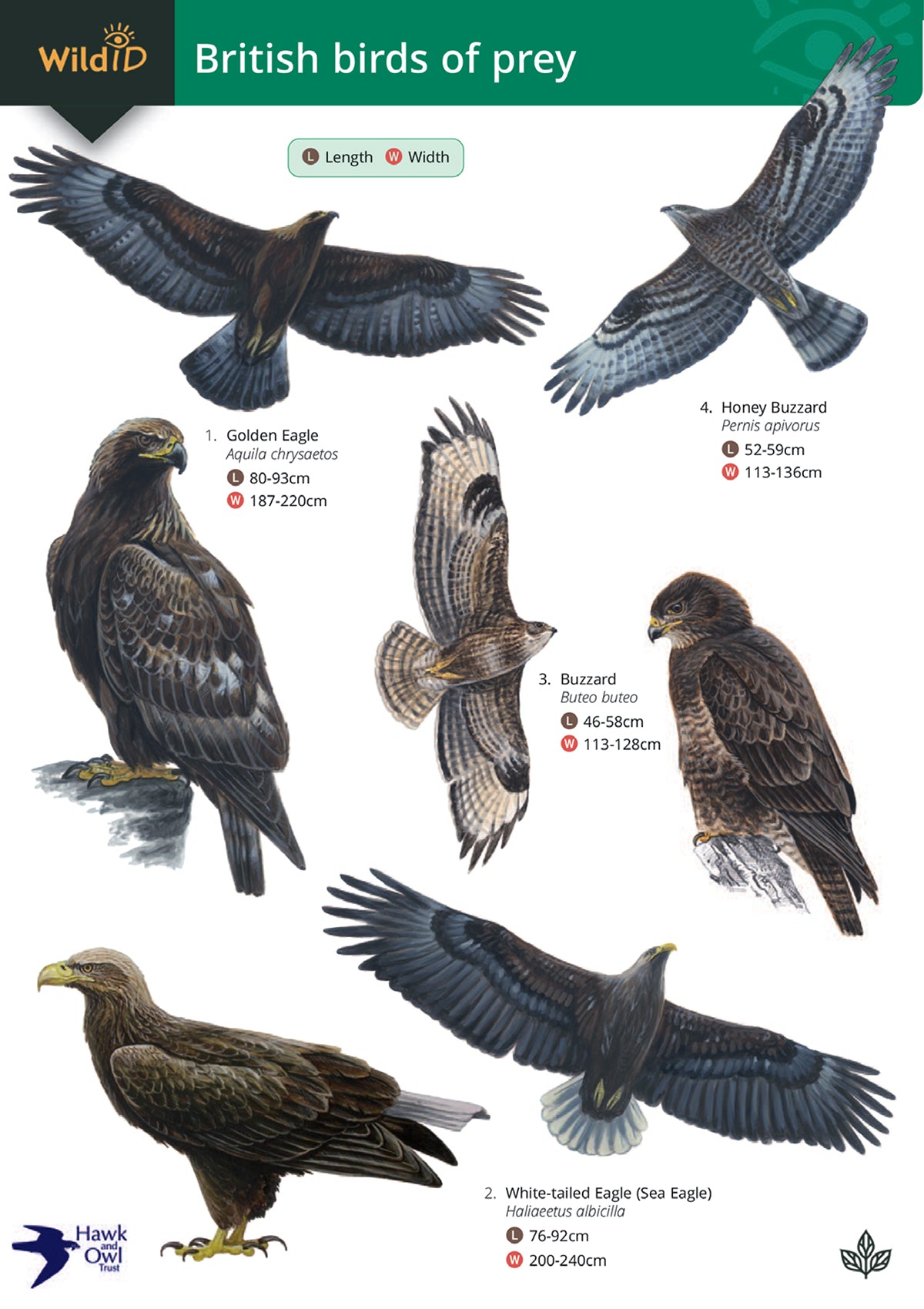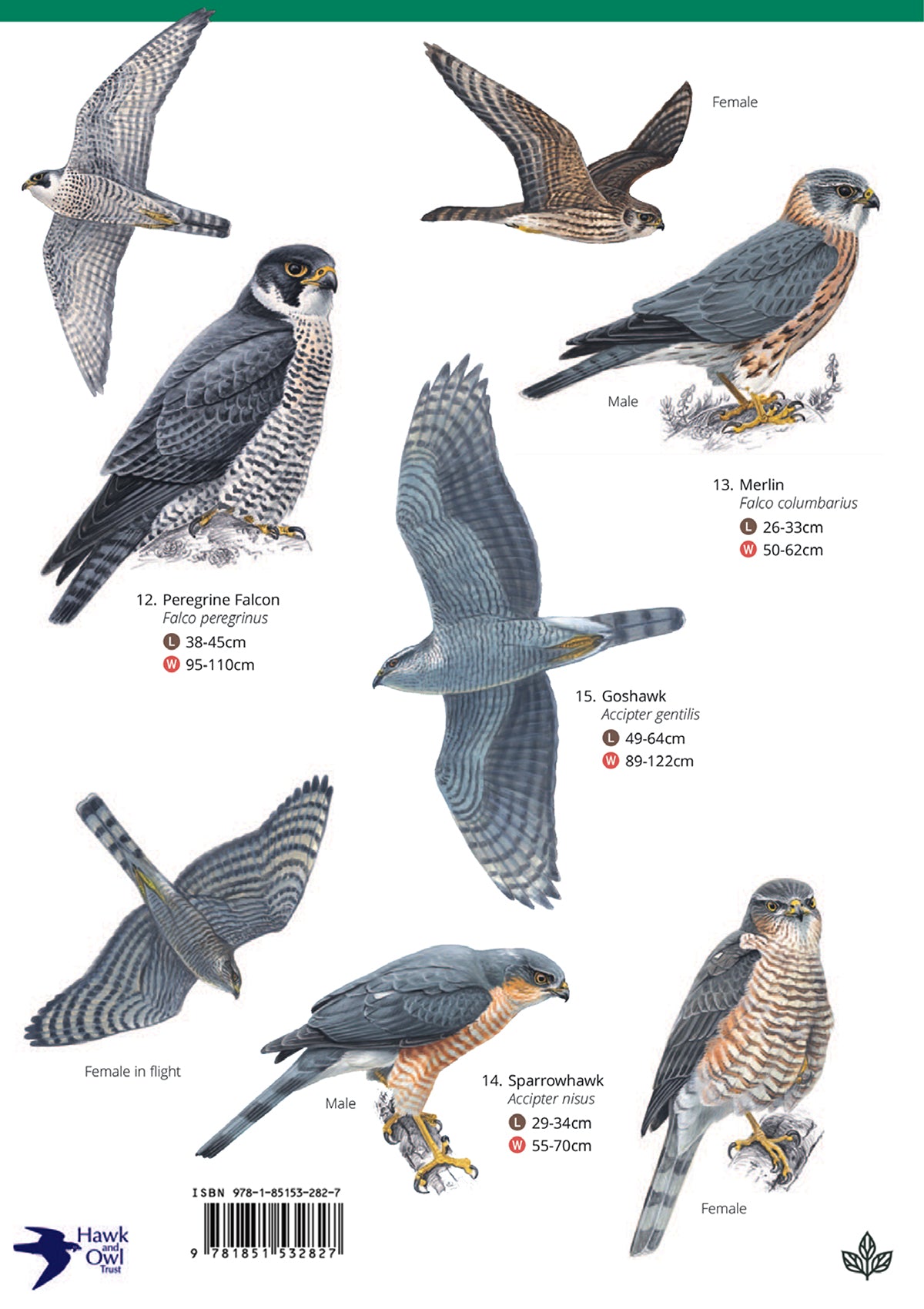Meadow in My Garden
Birds of Prey
Birds of Prey
Couldn't load pickup availability
Splashproof 8-panel fold-out field guide
Can be wiped clean
Robust when working outdoors
Rucksack sized - 24.5cm x 17.5cm
From buzzards to harriers and falcons to eagles: the Birds of Prey Guide features all 15 day-flying raptor species that breed in the UK.
Birds of prey can be highly variable and your view of the bird may be fleeting. But by looking at pictures side-by-side you can generally narrow down the choice to two or three species. To help confirm raptor identification, we have included particular features to look out for. For each bird these include size, habitat, range, flight pattern and possible confusion species.
Some species have marked differences between males and females in size and colour. In general most females are much larger. Plumage can vary between individuals of the same species, especially common buzzards. You may also see a juvenile, or adults with worn or moulting feathers.
45 species of diurnal raptor breed in continental Europe, with 308 species worldwide. So the British breeding fauna is small. Nevertheless the UK list contains representatives from three of the world’s five birds of prey families.
Most of these are resident all year round, while some are summer visitors. The population of some species is regularly boosted by migrants from outside the UK. Other species sometimes seen may be passage migrants, vagrants or escaped falconers’ birds.
Although not closely related, owls are also birds of prey, but their generally nocturnal or twilight hunting helps distinguish them from the diurnal species. However there are exceptions, Short-eared and little owls hunt in daylight. Urban peregrine falcons can use the glow of street lights to hunt in cities at night. Hobbies can catch prey at dusk.
The Birds of Prey identification guide was produced in partnership with the Hawk and Owl Trust.
Our popular Birds of Prey identification chart measures 24.5cm x17.5cm and is extremely lightweight and compact, and the perfect field guide for popping in your bag when heading outside. All wildlife identification guides are laminated, meaning they are showerproof for use outside. and can be wiped clean.
